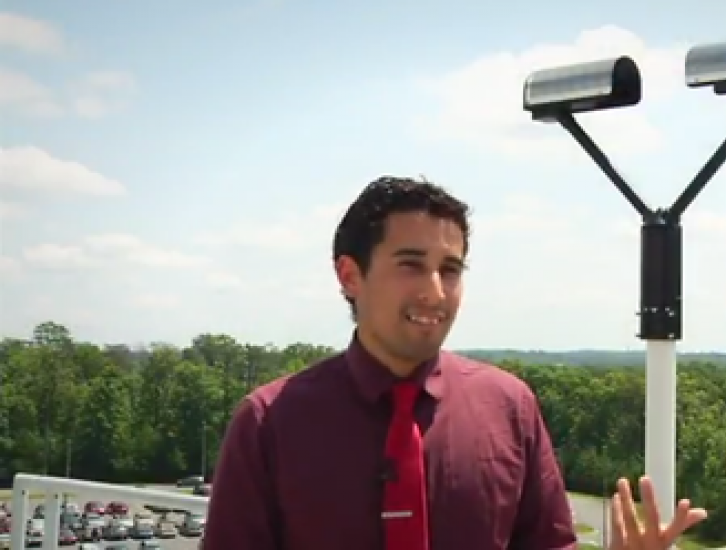
Goddard Intern Analyzing GPM Snowfall Data
Summer intern Jorel Torres, a graduate student from the South Dakota School of Mines and Technology, talks about snow research and the value of hard work, persistence, and passion.
Snow awes and annoys, brings nostalgia or abhorrence. For Jorel Torres, snow makes him curious—so much that he studies it.
For the past ten weeks, Torres compared various ground measurements of snow to data from NASA’s Global Precipitation Measurement mission as an intern at NASA’s Goddard Space Flight Center.
The snow, Torres said, is important to the Earth’s hydrological cycle as it is more unpredictable, thus less understood, than rain.
“Snow plays a big role in how much water content you get in the springtime, including flooding,” he said.
Accurate measurements of snowfall from new technologies are vital to the safety of areas affected by snow. Hopefully, Torres’s work will improve the accuracy of satellite measurements from GPM, contributing to a greater understanding of the whole life cycle of snow.
Meteorology interested Torres at a young age, and growing up in Denver familiarized him with snow.
“It just grew into a passion. When I got into high school I said, ‘Why don’t I go into this field for real,’” he said.
Torres completed bachelor’s degrees in math and atmospheric sciences from the University of Louisiana at Monroe. Following his graduation, Torres forecasted and did fieldwork in atmospheric sciences, enhancing his skills in computer programming. He then attended the South Dakota School of Mines and Technology where he continues to study atmospheric sciences as a master’s student.
At Mines, he was able to use an optical disdrometer, a precipitation-measuring instrument similar to some used by NASA, to conduct snow research. He learned how to troubleshoot the equipment and collect real-time data before one of his professors suggested a NASA internship.
“He was the best all around among dozen applicants to the summer internship.,” said Dr. Ali Tokay, Torres’s mentor at Goddard and a research associate professor at University of Maryland Baltimore County. Tokay said Torres’s experience with equipment and in the field and a good recommendation were important factors in his decision to mentor Torres.
Torres worked with data much of his internship. He scoured data sets from six locations sites within NASA’s Wallops Flight Facility for snow measurements, combined the different sets, and then analyzed the data with computer programs.
The biggest challenge for Torres even with a background in programming was learning Fortran, a computer language often used in weather computation.
Recently Torres decided to use his internship research for his master’s thesis and build on this summer’s research.
“From a mentor perspective you want to continue to working with your student,” said Tokay. He’s pleased Torres decided to continue this research for a master’s thesis.
At the end of the summer Torres presented his work during monthly Mesoscale Atmospheric Processes Laboratory meeting at Goddard, Goddard poster session and UMBC poster session. He‘s applying to a conference to present his work in the upcoming year.

